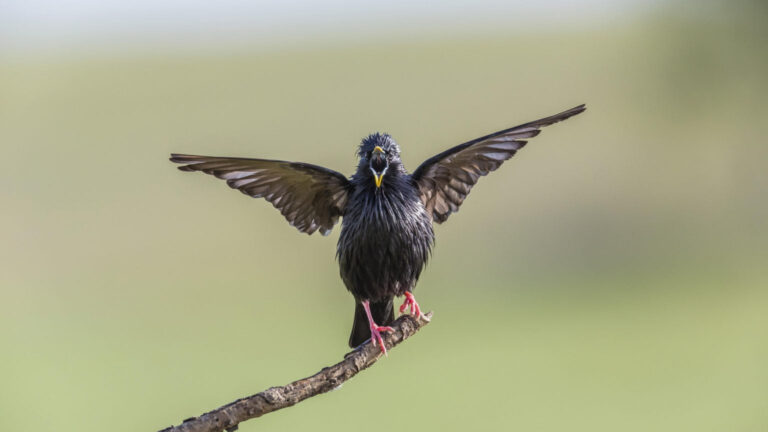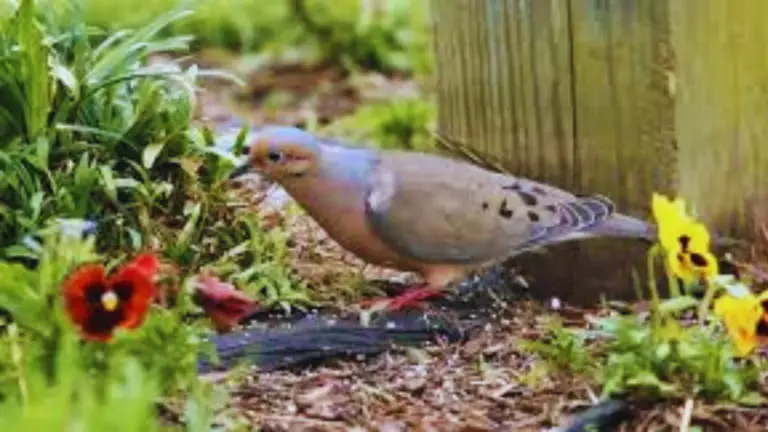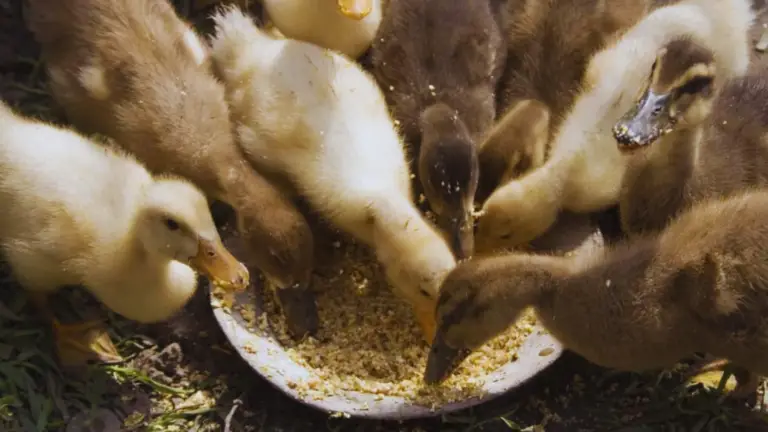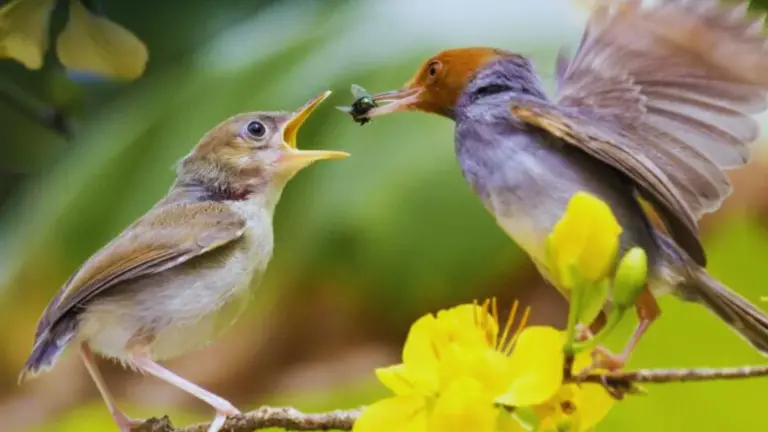As you step into Florida’s lush landscape, the chickadees’ culinary journey unfolds like a delicate tapestry, woven with intricate threads of insects, seeds, and fruits. You might be surprised to learn that these tiny birds don’t just flit about, snatching whatever’s available – they have a discerning palate, targeting specific trees, shrubs, and plants to satiate their hunger. But what drives their food choices, and how do they adapt to the Sunshine State’s unique seasonal rhythms? The answers lie in the intricate dance between chickadees and their environment, waiting to be discovered.
Key Takeaways
- Chickadees in Florida primarily feed on insects, seeds, and fruits, with insects being a substantial proportion of their diet.
- Berry-producing shrubs and trees, like blueberries and blackberries, are a staple in their winter diet, providing essential nutrients.
- Sunflower seeds, particularly black oil sunflower seeds, are a valuable source of energy for Florida chickadees.
- Oak trees, pine trees, and fruit trees offer nuts and seeds rich in protein, fat, and oil, which are crucial for their survival.
- Supplemental feeding, including suet and peanut butter, can provide concentrated energy sources and support Florida chickadees’ survival during food scarcity.
Insects: A Primary Food Source
During their foraging expeditions, chickadees frequently find themselves amidst a wealth of insect prey, which constitutes a substantial proportion of their diet.
As you observe these birds, you’ll notice they’re particularly drawn to insects that inhabit tree trunks, branches, and leaves. This is because chickadees have developed a preference for insects that reside in these areas, such as aphids, caterpillars, and spiders.
When searching for insects, chickadees often target specific habitats, like deciduous trees, shrubs, and even garden plants.
You may notice they’re attracted to areas with dense foliage, where insects tend to congregate. By exploiting these insect habitats, chickadees can capitalize on the abundance of prey available. Their insect preferences are shaped by the availability of food resources in their environment, and they’ve adapted to exploit these resources efficiently.
Seeds and Fruits Galore
As you explore the chickadee’s diet, you’ll discover that seeds and fruits play a significant role in their nutrition.
Berry delights, rich in antioxidants and fiber, are a staple in their winter diet, while sunflower seeds provide a valuable source of energy.
In the spring and summer, fruitful tree canopies offer a bounty of juicy fruits, which chickadees eagerly exploit to fuel their high metabolism.
Nutritious Berry Delights Found
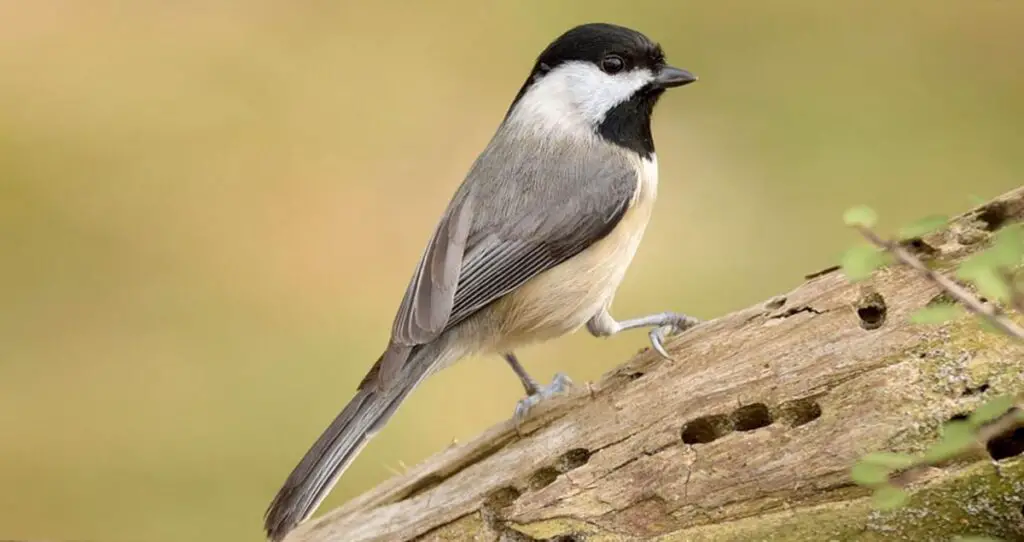
You’ll find that chickadees are particularly drawn to berry-producing shrubs and trees, which offer a diverse array of seeds and fruits that provide essential nutrients.
Berry varieties, such as blueberries, raspberries, and blackberries, are rich in antioxidants, vitamins, and minerals that support the chickadees’ overall health and well-being.
When analyzing the nutrient content of these berries, you’ll discover that they’re packed with:
- Anthocyanins, powerful antioxidants that protect against oxidative stress and inflammation.
- Vitamin C, essential for immune function and collagen production.
- Potassium, crucial for maintaining healthy blood pressure and promoting bone health.
- Fiber, which supports digestive health and satiety.
These nutrient-dense berries are a vital component of the chickadees’ diet, providing the energy and sustenance needed to thrive in Florida’s diverse landscapes.
Sunflower Seeds Abound Here
Chickadees also capitalize on the abundance of sunflower seeds, which provide a rich source of energy and nutrients.
You’ll often find them visiting backyard bird feeders, particularly those stocked with black oil sunflower seeds, their preferred variety. In fact, studies have shown that chickadees exhibit a strong seed preference for black oil sunflower seeds over other types, such as striped or hulled seeds.
This preference is likely due to the higher fat content and easier accessibility of the seed’s nutrients.
Sunflower varieties can vary in seed size, shape, and oil content, which may influence chickadee foraging behavior.
For instance, some sunflower varieties, like Mammoth or Velvet Queen, produce larger seeds that may be more appealing to chickadees.
Conversely, smaller-seeded varieties like Dwarf or Teddy Bear may be less attractive.
Understanding these preferences can help you tailor your bird feeder offerings to better meet the nutritional needs of chickadees and other seed-eating birds.
Fruitful Tree Canopies
While foraging for sustenance, chickadees also explore fruitful tree canopies, where seeds and fruits abound.
As a tree dweller, chickadees are well adapted to navigating the complex network of branches and leaves in search of food. Canopy exploration is a crucial aspect of their foraging behavior, allowing them to exploit the abundant resources found in these areas.
When exploring tree canopies, chickadees often focus on specific tree species that provide the most nutritious rewards.
Some of the most attractive trees for chickadees include:
- Oak trees, which produce acorns rich in protein and fat.
- Pine trees, which yield seeds high in oil content.
- Maple trees, which provide sap that can be consumed as a sweet, energy-rich drink.
- Fruit trees, such as cherries and blueberries, which offer juicy, sugary fruits.
Nuts and Berries Abound

When you observe chickadees foraging for nuts and berries, you’ll notice they’re quite particular about their seed sources, often favoring certain trees or bushes over others.
You’ll also see they employ specific strategies to pick berries, such as plucking them from the branch or dropping them to the ground to retrieve them.
Seed Sources Matter
During winter’s peak, seed sources become crucial to chickadees’ survival, as natural foraging areas are blanketed with snow, reducing accessibility to insects and other invertebrates.
As you observe chickadees in Florida, you’ll notice they rely heavily on seeds as a primary food source.
The quality of these seeds significantly impacts their energy intake and overall health.
When it comes to seed sources, diversity matters.
You’ll find that chickadees thrive in areas with:
- Mixed crop fields: Providing a diverse range of seeds, including sunflower, corn, and wheat.
- Native grasslands: Offering a variety of grass seeds, such as switchgrass and bluestem.
- Orchards: Supplying seeds from fruit trees, like apple and cherry.
- Backyard bird feeders: Supplementing their diet with high-quality seeds, like nyjer and safflower.
Seed quality is also essential, as chickadees require seeds high in fat and protein to sustain themselves during the winter.
Berry Picking Strategies
Beyond seeds, chickadees also capitalize on the abundance of nuts and berries in Florida’s winter landscape, employing clever strategies to exploit these energy-rich resources.
As you observe these birds, you’ll notice they’re skilled at finding berries, and their berry searches often rely on visual cues. They’re attracted to berries with contrasting colors, shapes, or sizes that stand out against the surrounding foliage.
When foraging for berries, chickadees typically start by scanning the landscape from a high perch, using their keen eyesight to spot potential food sources.
They then fly down to investigate, using their sharp beaks to pluck berries from branches. You may notice that they often focus on berry clusters with a high concentration of fruit, as these provide the most energy per unit of effort.
Nutty Feasting Spots
Florida’s winter landscape unfolds as a treasure trove of nuts and berries, enticing chickadees to exploit these energy-rich resources at prime feasting spots.
As you explore the state’s natural areas, you’ll find chickadees flocking to these nutty feasting spots, capitalizing on the abundance of food.
Woodland edges, in particular, serve as cozy cafes where chickadees can find a diverse array of nuts and berries.
Check out these prime feasting spots:
- Oak trees: Acorns are a staple in many chickadees’ diets, providing essential protein and fat reserves.
- Pine stands: Seeds from pine cones offer a convenient snack for chickadees, rich in oils and carbohydrates.
- Hawthorn shrubs: Berries from these thorny shrubs are a favorite among chickadees, providing a sweet and energy-rich treat.
- Wild plum thickets: Juicy fruits from these deciduous shrubs are a welcome addition to any chickadee’s meal.
Human-Provided Treats Matter
Among the array of food sources available to chickadees, human-provided treats have emerged as a significant component of their diet.
You may be surprised to learn that these birds have adapted to rely on backyard offerings, which can provide a substantial portion of their daily calories.
Supplemental feeding has become an essential aspect of chickadee nutrition, particularly during periods of food scarcity. By providing seeds, nuts, and fruits, you can attract these birds to your yard and support their survival.
Research has shown that chickadees exhibit a strong preference for human-provided food, often visiting feeders multiple times a day.
This reliance on human-provided treats is likely due to the consistency and reliability of these food sources, which can be particularly important during harsh weather conditions or when natural food sources are scarce.
Suet and Peanut Butter
You can offer chickadees a concentrated source of energy by providing suet and peanut butter, which are particularly valuable during periods of cold weather or when natural food sources are scarce.
These high-calorie foods can help chickadees survive periods of harsh weather and support their energetic lifestyles.
When it comes to suet options, you can choose from:
- Beef fat suet: A classic choice, beef fat suet is a reliable option that chickadees love.
- Vegetable-based suet: A great alternative for those looking for a plant-based option, vegetable-based suet is just as effective.
- Suet with added seeds and nuts: Mixing suet with seeds and nuts can provide an added nutritional boost for chickadees.
- Homemade suet recipes: You can also create your own suet recipes using a combination of ingredients like peanut butter, seeds, and nuts.
As for peanut butter, you can opt for creamy or crunchy varieties, as chickadees don’t seem to have a preference.
Natural peanut butter with minimal added ingredients is a good choice, as it provides a more natural source of protein and fat.
Foraging in Urban Landscapes
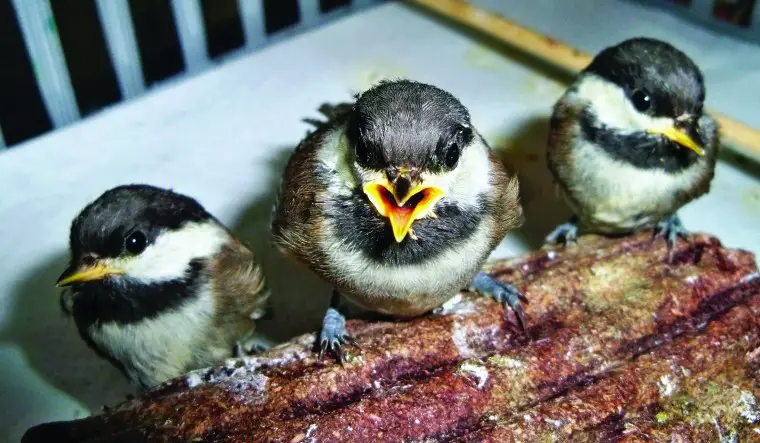
As urbanization expands, chickadees must adapt to foraging in human-altered landscapes, where natural habitats are fragmented and resources are limited. You may observe chickadees visiting backyard feeders or foraging for food in urban parks and green spaces. Urban foraging requires chickadees to be flexible and opportunistic in their feeding behaviors. They exploit available food sources, such as insects, seeds, and fruits, to survive in these environments.
| Urban Food Source | Chickadee Adaptation |
|---|---|
| Insect-rich gardens | Chickadees forage for insects in gardens with native plants |
| Bird feeders | Chickadees visit feeders with sunflower seeds and suet |
| Fruit trees | Chickadees eat fruits, such as cherries and blueberries, from urban trees |
| Park lawns | Chickadees forage for ground-dwelling insects and seeds on lawns |
| Urban waste | Chickadees scavenge for food scraps in trash and compost piles |
In adapting to urban landscapes, chickadees develop city-specific foraging strategies, allowing them to coexist with humans in these environments. By understanding these adaptations, you can better appreciate the resilience of chickadees in Florida’s urban ecosystems.
Adapting to Seasonal Changes
While chickadees have adapted to foraging in urban landscapes, they also face the challenge of seasonal changes, which significantly impact their food availability and foraging strategies.
As you observe chickadees in Florida, you’ll notice they adjust their behavior to cope with these changes. During winter, they exhibit specific habits, such as flocking together and visiting feeders more frequently, to compensate for the scarcity of natural food sources.
To better understand their adaptability, consider the following aspects of their seasonal adjustments:
- Winter caching: Chickadees cache seeds and nuts in various spots to retrieve later when food is scarce.
- Dietary flexibility: They modify their diet to incorporate available resources, such as berries, suet, and insects, depending on the season.
- Climate flexibility: Chickadees can survive in a wide range of temperatures, from -20°F to 100°F, demonstrating their ability to adapt to extreme climate conditions.
- Foraging strategy shifts: They alter their foraging strategies, such as changing their foraging height or exploiting new food sources, to optimize energy intake during different seasons.
Frequently Asked Questions: Chickadees in Florida
How Can I Attract Chickadees to My Backyard in Florida?
You can attract chickadees to your backyard by installing bird feeders filled with their preferred seed varieties, such as sunflower seeds, nyjer seeds, and suet, which provide high energy for these birds’ constant foraging activities.
Do Chickadees Migrate or Stay in Florida Year-Round?
As you step into your Florida backyard, you might wonder if chickadees are winter snowbirds or year-round residents. Interestingly, chickadees don’t migrate far, and Florida’s mild climate makes them winter residents, with some individuals making short altitudinal migrations in response to food availability.
Are Chickadees Social Birds or Solitary Foragers?
You observe that chickadees often forage in small groups, exhibiting complex flock dynamics, with individuals alternating between solitary foraging strategies and cooperative behavior, suggesting a mix of social and solitary tendencies in their foraging habits.
Can Chickadees Recognize Individual Humans and Feeders?
You observe that chickadees can recognize individual humans and feeders, exhibiting facial recognition and human bonding, as they adapt to frequent visitors, associating specific faces with food sources and developing trust through consistent interactions.
How Can I Provide a Chickadee-Friendly Habitat in My Neighborhood?
You can create a chickadee-friendly habitat by incorporating native plants and bird-friendly landscaping into your yard, providing shelter, food, and water sources, which will attract these birds and support their survival and thrival.
Conclusion
As you delve into the world of Florida’s chickadees, it’s clear that their culinary preferences are a delicate balancing act. They savor the sweetness of berries and seeds, indulge in the richness of nuts, and feast on the protein-packed insects. By embracing their adaptability and seasonal adjustments, you’ll find that these charming birds thrive in the Sunshine State’s diverse landscapes. By catering to their tastes, you’ll be rewarded with their cheerful presence in your backyard oasis.


